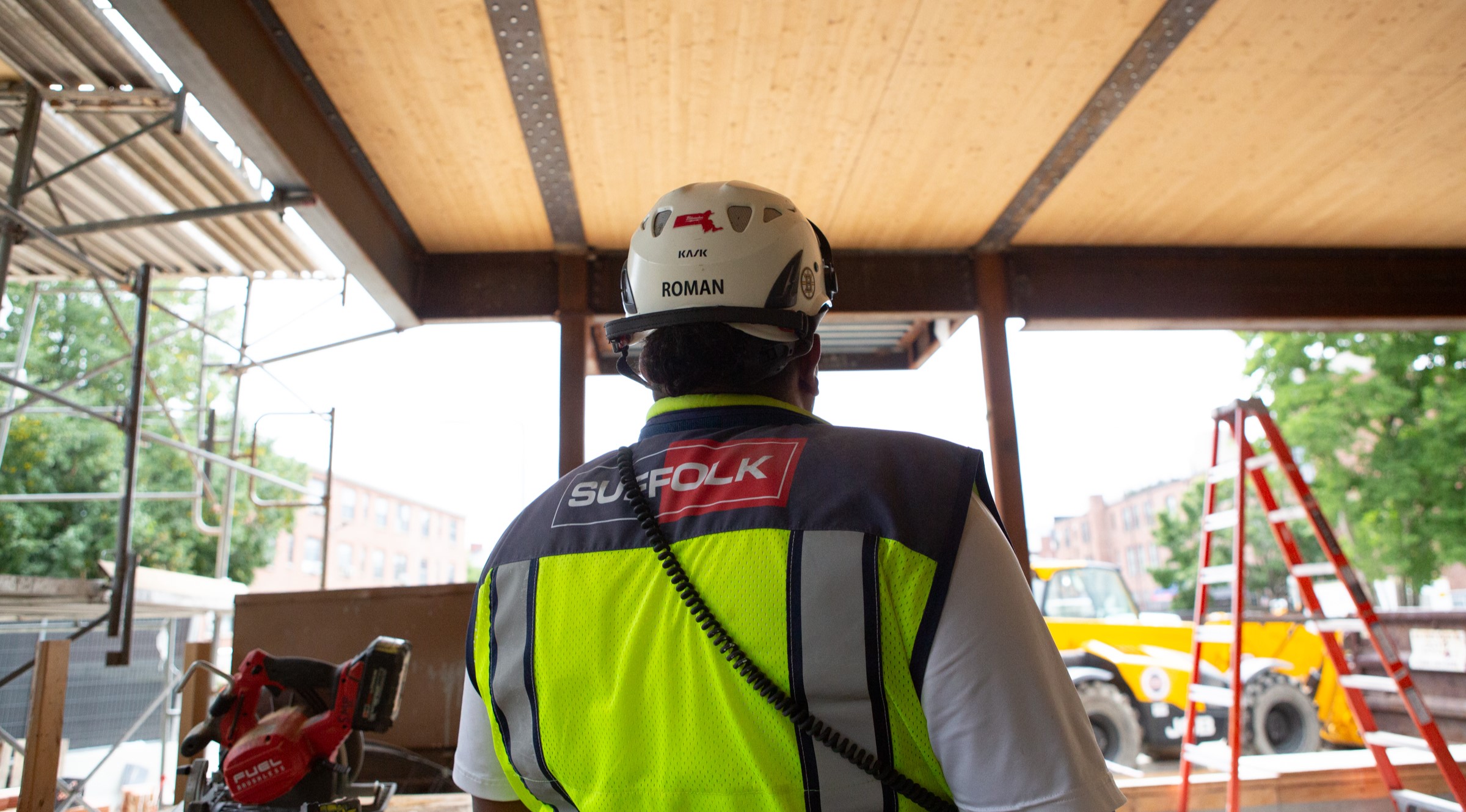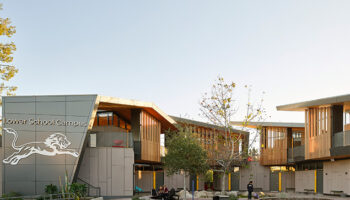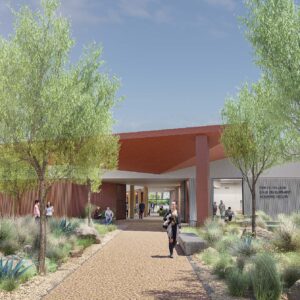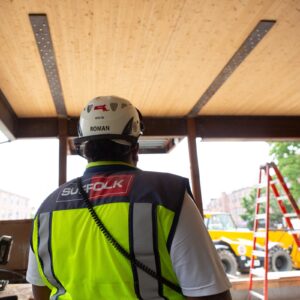
The Bunker Hill Housing Redevelopment is creating a sustainable, mixed-income community at the heart of historic Charlestown, promising 21st century comfort, energy efficiency and carbon-reducing performance. The project, which is replacing 42 aging buildings, marks the largest public housing project north of New York City, with new residential buildings, retail and community space. Suffolk is working on Building M, the first of 15 new buildings in the redevelopment.
One Charlestown is unique in that it combines best-in-class energy design alongside major reductions in the embodied carbon of the project — the carbon associated with the building materials. For the design of the energy performance, Building M has achieved Phius/Passive House Design Certification and is seeking full certification. Passive House is the most rigorous energy design standard available to projects and is characterized by extreme levels of building airtightness and high levels of envelope thermal performance. Passive House projects also use continuous ventilation decoupled from the heating and cooling system, which increases indoor air quality and energy performance through an energy recovery device on the ventilation air.
Arguably the most notable aspect of Passive House certification is a pass / fail test at the end of the project that measures the amount of air leakage through the building’s wall and roof systems. The Building M team conducted a preliminary test to ensure they would pass at the end of the project; they exceeded the Passive House requirements by 20 percent, an impressive feat.
The project’s primary strategy for embodied carbon reduction is seven-layer Nordic X-Lam Cross Laminated Timber (CLT) for all above-grade floors in the six-story building, replacing standard concrete plank. Because mass timber buildings weigh less than traditional steel and concrete structures, the team was also able to capture material efficiencies in a reduced foundation design. They also optimized their concrete mixes to gain an additional seven percent reduction in their embodied carbon impacts.












